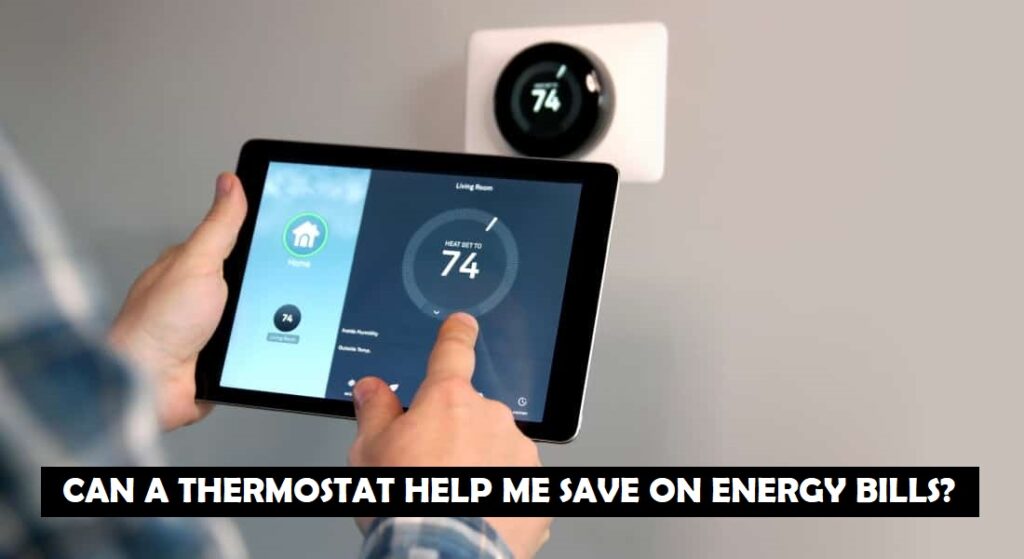In today’s world, where energy conservation and cost savings are paramount, homeowners are constantly seeking innovative solutions to reduce their energy bills. A relatively inconspicuous yet highly effective tool in this endeavor is the smart thermostat. These intelligent devices have garnered attention for their ability to optimize heating and cooling systems in homes, ultimately leading to substantial energy savings. In this comprehensive article, we will explore the world of smart thermostats and delve into how they can play a pivotal role in reducing your household’s energy consumption and expenditures.

Understanding Smart Thermostats
What Is a Smart Thermostat?
Before we delve into the ways smart thermostats can help save on energy bills, it’s essential to understand what these devices are. Unlike traditional thermostats, which require manual adjustment, smart thermostats are programmable, internet-connected devices. This connectivity allows users to control their thermostats remotely through a dedicated smartphone app or even voice commands.
How Do Smart Thermostats Work?
The magic behind smart thermostats lies in their advanced algorithms and sophisticated sensors. These devices learn and adapt to your heating and cooling preferences over time. By continuously monitoring your behavior, they can automatically adjust temperature settings, optimizing energy usage without compromising your comfort. Moreover, smart thermostats often provide detailed energy consumption reports, giving you valuable insights into your energy usage patterns.
The Energy-Saving Benefits
Precision Temperature Control
One of the primary advantages of smart thermostats is their unparalleled precision in temperature control. Unlike traditional thermostats that often lead to temperature fluctuations, smart thermostats excel at maintaining your home at the ideal temperature. This consistent control minimizes the need for constant manual adjustments, resulting in more efficient operation of your heating and cooling systems, ultimately translating into energy savings.
Learning Algorithms
Smart thermostats are rapid learners. They quickly adapt to your daily routine and heating and cooling preferences. For instance, if you leave for work every morning at 8 AM, your smart thermostat will learn this pattern and lower the temperature while you’re away. It will then automatically raise the temperature just before your expected return, ensuring a comfortable environment when you’re home without wasting unnecessary energy.
Remote Access
Picture this: you’re at work, and you realize you forgot to lower the thermostat before leaving. With a smart thermostat, this is not a problem. These devices offer the convenience of remote access. You can use your smartphone to adjust the temperature settings from anywhere, whether you’re at the office, on vacation, or simply lounging on the couch. This feature empowers you to make real-time adjustments to optimize energy usage.
Energy Usage Insights
Smart thermostats provide invaluable insights into your energy consumption. By reviewing detailed reports generated by these devices, you can gain a profound understanding of when and how your home uses energy. Armed with this knowledge, you can make informed decisions about further reducing energy consumption, such as identifying patterns and making necessary adjustments.
Installation and Compatibility
Easy Installation
One might assume that installing such advanced technology would be a complicated affair. However, installing a smart thermostat is typically a straightforward process. Most manufacturers provide step-by-step installation guides to assist you in setting up the device. In many cases, homeowners can successfully complete the installation themselves, eliminating the need for professional help.
Compatibility
Before you rush to purchase a smart thermostat, it’s crucial to verify compatibility with your existing HVAC (Heating, Ventilation, and Air Conditioning) system. While most modern HVAC systems are compatible with smart thermostats, there can be exceptions. By ensuring compatibility, you can avoid any potential issues or setbacks during installation.
Cost vs. Savings
Initial Investment
It’s true that smart thermostats come with an initial cost, ranging from approximately $100 to $300, depending on the brand and model. However, it’s essential to view this expense as an investment rather than an expenditure. The energy savings and potential incentives can make the upfront cost of a smart thermostat a wise financial decision.
Long-Term Savings
The real allure of smart thermostats lies in their long-term savings potential. According to the U.S. Environmental Protection Agency (EPA), these devices can reduce energy bills by an impressive average of up to 23%. Over the years, this translates into substantial savings that more than compensate for the initial investment.
In conclusion, the answer to the question “Can a thermostat help me save on energy bills?” is a resounding yes. Smart thermostats are not just gadgets; they are powerful tools that can significantly reduce your energy consumption and, consequently, your monthly bills. With their precision temperature control, learning algorithms, remote access capabilities, and detailed energy insights, these devices are indispensable for any energy-conscious homeowner. While there may be an initial cost involved, the long-term savings and the positive environmental impact make smart thermostats a wise choice.




